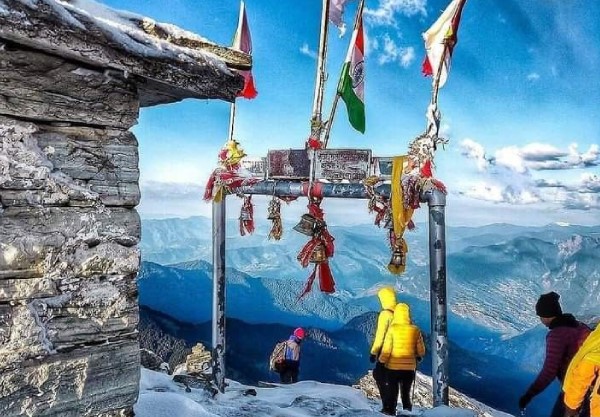Himani Chamunda Trek
Why Trek to Himani Chamunda?
- Spiritual Significance: The Himani Chamunda Temple is an important spiritual site dedicated to Goddess Chamunda. The temple has a strong following among locals and pilgrims, who believe that visiting the temple brings blessings and protection. The temple is famous for its peaceful environment, offering trekkers a chance to meditate, reflect, and connect with their spirituality. The combination of natural beauty and religious significance makes this trek a unique spiritual journey.
- Scenic Views: One of the biggest attractions of the trek is the spectacular scenery. As you ascend, the view of the Kangra Valley below becomes increasingly enchanting. The lush greenery of the valley and the towering Dhauladhar Range in the background make for a truly awe-inspiring sight. The trek offers panoramic views of snow-capped peaks, forests, and villages, making it perfect for nature lovers and photography enthusiasts.
- Physical Challenge: The trek offers moderate difficulty, which provides trekkers with a satisfying physical challenge. While the trek is not overly strenuous, it is still demanding enough to give trekkers a sense of accomplishment upon reaching the summit.
- Adventure and Solitude: The trek offers a sense of adventure and solitude, making it ideal for those who want to disconnect from their routine and experience nature at its best. With limited crowds, trekkers can enjoy the peaceful surroundings and the fresh air of the Himalayas.
Route and Difficulty
The Kangra to Himani Chamunda Trek is of moderate difficulty. While it is not as challenging as some high-altitude treks, it still requires a decent level of fitness, especially if you’re not accustomed to long hikes. The trek starts from Kangra, a town known for its historical significance and picturesque surroundings.
From Kangra, the route initially takes you through dense forests of pine and oak, where you can enjoy the cool shade and natural beauty. Along the way, there are several spots to take breaks and enjoy the breathtaking views of the valley below. The path gradually ascends, becoming steeper as you get closer to the temple.
The final stretch towards the Himani Chamunda Temple is relatively steep, but it is manageable with a slow and steady pace. Once at the top, trekkers are rewarded with spectacular panoramic views of the surrounding Dhauladhar Range and Kangra Valley.
The trek typically takes 1-2 days to complete, depending on the pace of the trekker. Most trekkers prefer to complete the journey in a single day, though it’s possible to break it into two days by camping near the temple or in one of the villages along the route.
Best Time to Trek
The ideal time for the Kangra to Himani Chamunda Trek is between March to June and September to November. During these months, the weather is pleasant, with moderate temperatures and clear skies. The summer months (March to June) offer a comfortable climate for trekking, while the post-monsoon period (September to November) is perfect for those who want to avoid the rain and enjoy clear views.
Avoid trekking during the monsoon season (July and August) due to the risk of landslides and slippery trails. The winter months (December to February) can be quite cold, especially as you ascend, and while the views are stunning, snow may make the trek more challenging for inexperienced trekkers.





